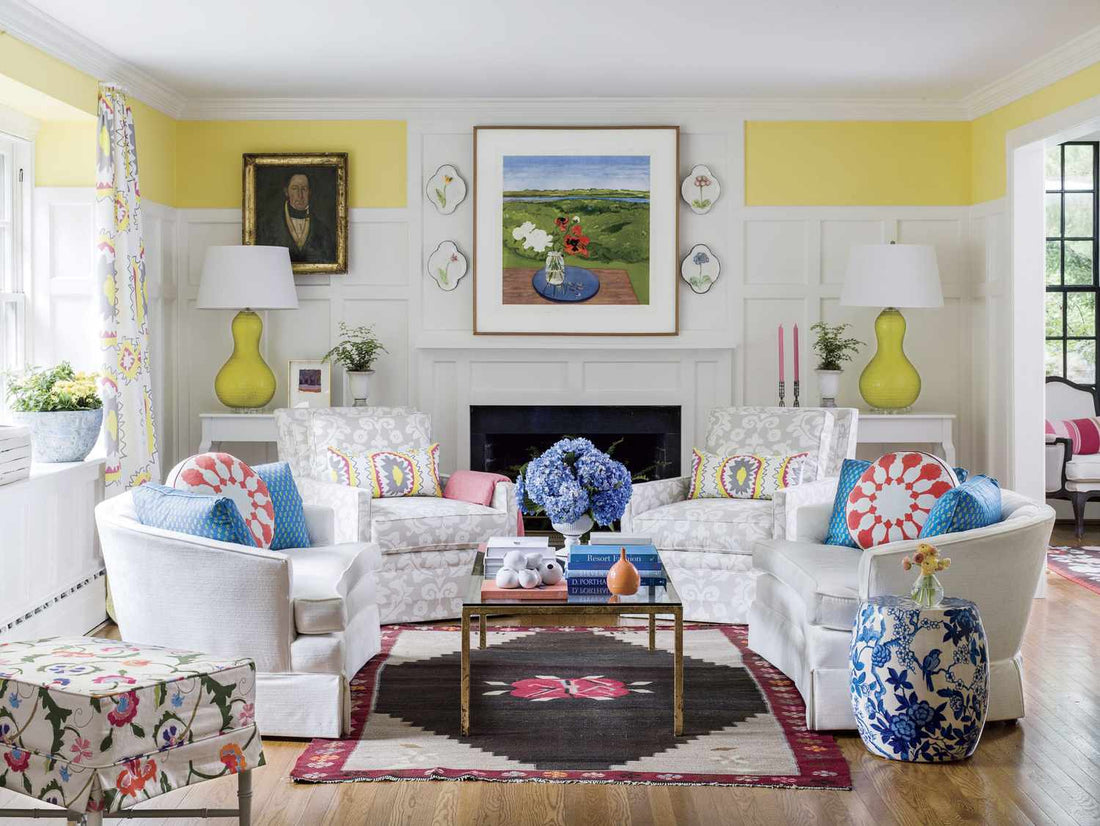Mixing interior design styles can transform your home into a unique and personal space. When done right, blending different styles adds depth, character, and a touch of sophistication to any room. But can you mix styles in a home without creating chaos? The answer is a resounding yes, and this guide will show you how to mix interior design styles seamlessly. From choosing a dominant style to balancing colors and textures, you’ll learn everything you need to mix interior design styles like a pro.
The 80/20 Rule
The 80/20 Rule in interior design suggests that 80% of a room should adhere to one dominant style, while the remaining 20% can incorporate elements from other styles you appreciate. For incorporating three styles, a 70-20-10 split is recommended.
To effectively implement this rule:
- Select the primary style that will dominate 80% of the room's design. This creates a cohesive base for your space.
- Integrate smaller elements from other styles you enjoy, ensuring they complement the main style without overwhelming it.
In a predominantly modern living room, you might have 80% modern furniture and decor, blending traditional and contemporary elements like an antique coffee table or traditional area rug to create a living room style fusion. This mix interior design styles approach adds character and depth to the room, creating a harmonious balance between different eras and aesthetics.
The 60-30-10 Color Rule
The 60-30-10 Color Rule is a guideline for distributing colors in a room to achieve a balanced and visually appealing design. It recommends that 60% of the room should be a dominant color, usually subdued or neutral, 30% should be a secondary color that is slightly bolder, and 10% should be an accent color that is the boldest or most subtle, depending on the desired effect.
To apply this rule effectively:
- Choose a main color: Select a dominant color for the walls and large furniture pieces, covering 60% of the room.
- Select a secondary color: Use a secondary color for smaller furniture and textiles, covering 30% of the room.
- Pick an accent color: Choose an accent color for accessories and small decor items, making up the remaining 10%.
In a bedroom designed to mix interior design styles, 60% might be a soft gray for the walls, bed frame, and carpet. The secondary color, covering 30%, could be navy blue for curtains and an armchair. Finally, the accent color, making up 10%, could be yellow for throw pillows and artwork, blending traditional and contemporary hues to achieve a harmonious and inviting space.

The Rule Of Three
The rule of three, a fundamental principle in interior design, asserts that items grouped in sets of three (or other odd numbers) are more visually appealing. This principle can be applied to decor items, room layouts, and object shapes, enhancing the overall aesthetic by introducing texture mixing techniques and creating a harmonious balance through the principles of interior design.
Use this approach to group items effectively:
- Group decor items in sets of three. Mix interior design styles subtly by combining different items that adhere to the rule of three.
- Use three different heights or sizes to add visual interest and depth.
On a mantel, arrange three items such as a tall vase, a medium-sized framed photo, and a small decorative object. This trio not only follows the rule of three but also showcases texture mixing techniques, contributing to a cohesive and pleasing visual arrangement.
The 2/3 Rule (Golden Ratio)
The 2/3 rule, or the golden ratio, is a guideline suggesting that many items achieve optimal visual appeal when they are approximately 2/3 the size of the space or item they complement. This principle helps maintain balance and proportionality.
Create balance with these sizing tips:
- Size furniture and decor items to be about 2/3 the size of the space or item they accompany. Ensure the proportions align with the golden ratio to enhance the visual harmony.
Couches: Position a couch to be 2/3 the length of the wall it rests against.
Art/Wall Decor: Select artwork or wall decor to be 2/3 the size of the furniture or space below it.
Coffee Tables: Choose a coffee table that is 2/3 the length of the couch it complements.

The Repetition Rule
The repetition rule involves repeating elements throughout a space to create cohesion and unity. This can include colors, patterns, or textures, which when repeated, strengthen the overall design concept.
Bring unity to your room this way:
- Choose a specific color, pattern, or texture and incorporate it in at least three distinct areas within the room. Ensure the repeated elements align with the overall design scheme and style of the room.
To achieve a cohesive look, use the same shade of blue in your curtains, throw pillows, and a piece of artwork. This repetition ties the room together, showcasing texture mixing techniques and effectively blending different interior design styles.
The Scale And Proportion Rule
The Scale and Proportion Rule ensures that furniture and decor items are appropriately sized for the space they occupy. This principle helps create a harmonious and balanced room.
Keep your room balanced with these ideas:
- Achieve visual balance by combining large and small furniture pieces.
- Make sure furniture is neither too big nor too small for the room, maintaining a cohesive look.
In a spacious living room, you might use a substantial sectional sofa as the focal point, balanced with smaller accent chairs and a mix of large and small decorative objects. This approach ensures that each piece complements the overall scale of the room while mixing interior design styles for a dynamic and engaging space.
The Layering Rule
The Layering Rule involves adding depth to your design by layering different textures, patterns, and materials. This technique enhances the richness and complexity of the space.
Add depth to your design like this:
- Mix various textures and materials in textiles and furniture. Layer elements from different design styles to create a cohesive yet diverse interior.
- Use multiple rugs, mix patterns in fabrics, and vary finishes on surfaces to create a multi-dimensional look.
On a bed, you could layer a quilted comforter with a knit throw blanket and pillows in various textures such as velvet, linen, and faux fur. This method not only adds depth and interest but also effectively mixes interior design styles, resulting in a rich, layered look.

The 90/10 Rule For Trends
The 90/10 Rule for Trends suggests that 90% of your decor should consist of timeless pieces, while the remaining 10% can be trendy items. This balance allows for a classic foundation with the flexibility to incorporate current trends.
Mix timeless and trendy elements as follows:
- Choose classic, enduring furniture and major decor items for the majority of the room. Blend timeless and trendy pieces to create a balanced and stylish look.
- Add trendy items through easily changeable accessories and decor.
In a kitchen, you could use classic white cabinets and stone countertops (90%) as the enduring elements. Complement these with trendy copper pendant lights or colorful bar stools (10%), which can be easily updated as trends change. This strategy not only maintains a timeless appeal but also allows for the seamless mixing of interior design styles, keeping the space both current and adaptable.
Conclusion
When considering how to mix interior design styles, remember above simple rules to achieve a balanced and cohesive look. These principles guide you in creating a harmonious home that reflects your unique taste.
To explore more options and see how to mix interior design styles effectively, visit COZY and discover a wide range of furniture and decor perfect for your home.





